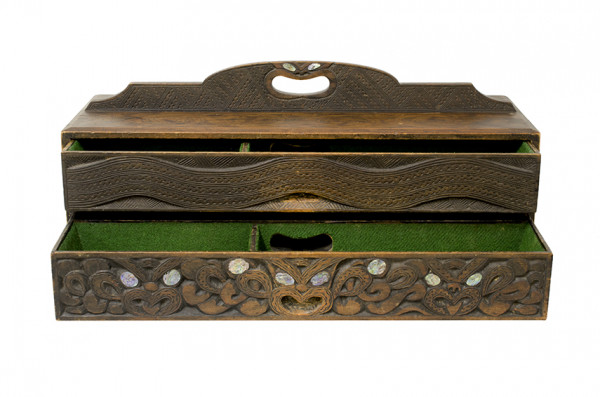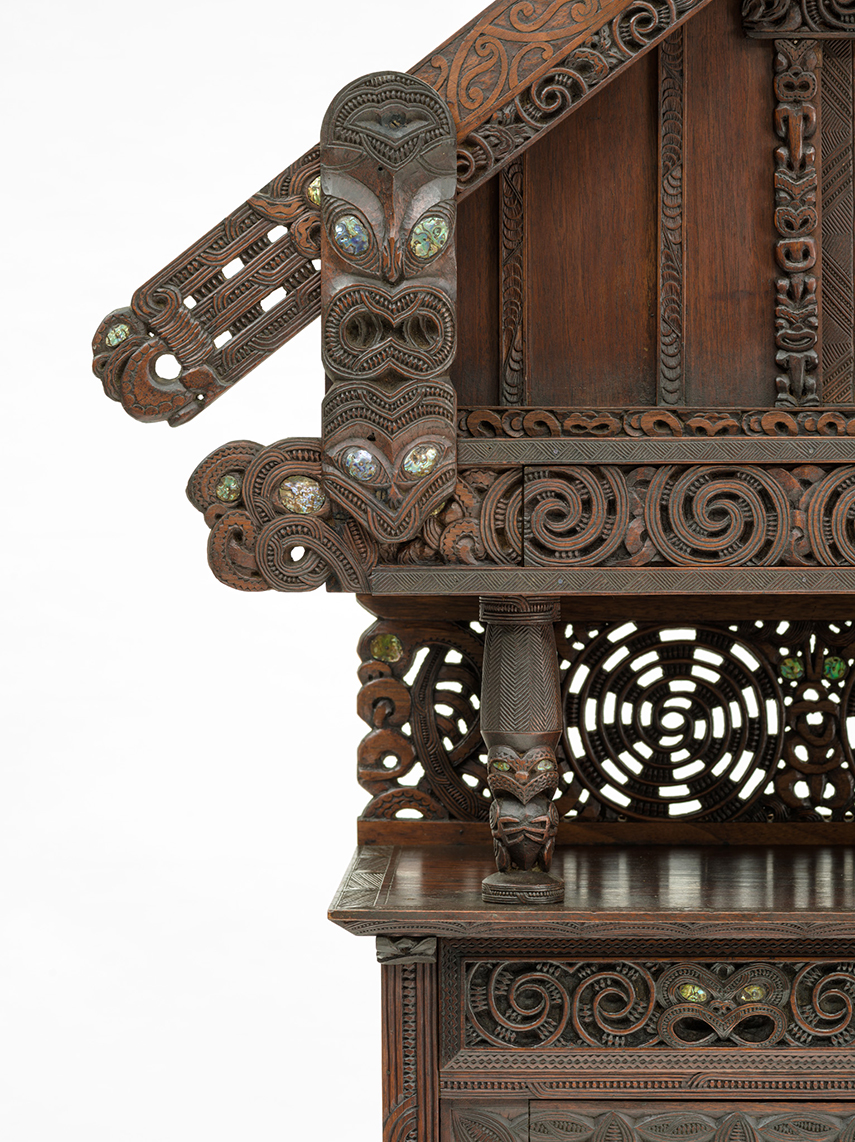
John Henry Menzies (1839-1919) was born in England and arrived in New Zealand in 1860 aged 21.
He was a farmer, but while living on Banks Peninsula (from 1878) he took up carving.
Due to a house fire in 1907, few records survive regarding his artistic life, but he produced a surprisingly large body of work: around 80 pieces of carved furniture are known; of the three houses he designed and decorated only the hallway from Rehutai survives; however the church he designed and decorated, St Luke’s, at Little Akaloa remains as a place of worship. St Luke’s Anglican Church is rated as Category 1 on the Heritage New Zealand Pouhere Taonga List.
Menzies' deep interest in reproducing toi whakairo, Māori carving, is a characteristic of much (but not all) of his work.
Akaroa Museum owns a cutlery canteen carved with Māori patterns and figures.

Cutlery canteen. Carved by J. H. Menzies, c.1890s. Akaroa Museum collection. Donated by Leonora McCormack.
Akaroa Museum co-owns a large chiffonier with Christchurch Art Gallery Te Puna o Waiwhetū. Known as the Stanford Family Pātaka Cabinet, this piece appears to have been designed, built and carved by Menzies.
The following short documentary explores Menzies’ fascination with toi whakairo in relation to the Stanford Family Pātaka Cabinet. It was written by Daniel Smith and produced and directed by Chris Pole.
Other examples of his carved works in the Akaroa Museum collection are a chest and a drop front desk. The Museum, from time to time, also displays furniture lent by Menzies’ descendants.
In addition, the collection contains a copy of Māori Patterns Painted and Carved (Christchurch: Smith and Anthony, 1910), an album of 28 lithographs made from Menzies’ painted pattern studies.
Connected to this collection are two large photographic prints, Rehutai #2 and St Luke’s #2 from Neil Pardington’s Rehutai series (2005).
For more information, the article J. H. Menzies: a reappraisal is freely available from the journal Records of Canterbury Museum, 2017, Vol. 31, pp.85-114.
Opening hours
10.30am to 4:30pm,
seven days a week.




